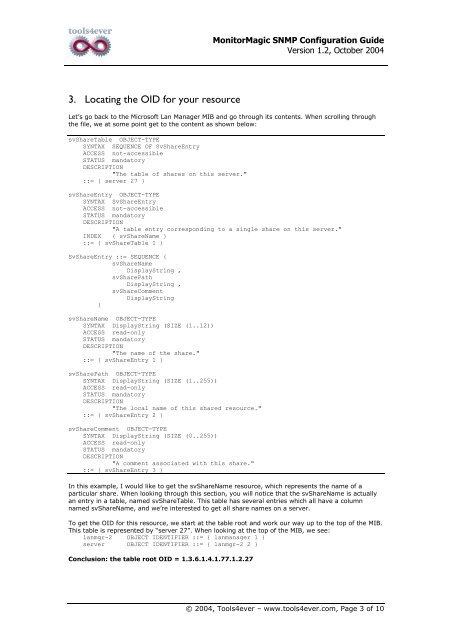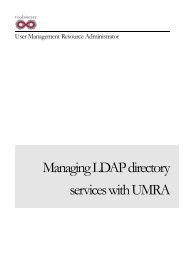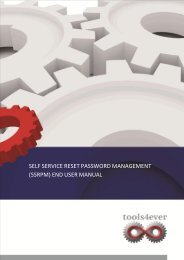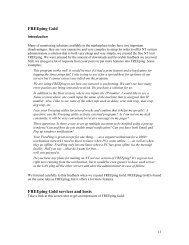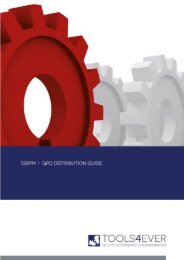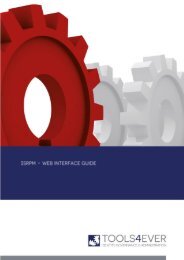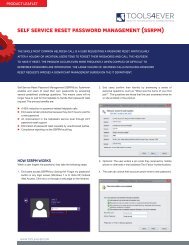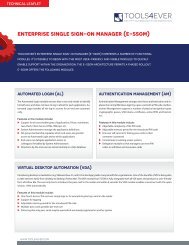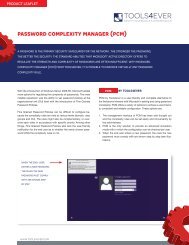SNMP - Tools4Ever.com
SNMP - Tools4Ever.com
SNMP - Tools4Ever.com
Create successful ePaper yourself
Turn your PDF publications into a flip-book with our unique Google optimized e-Paper software.
MonitorMagic <strong>SNMP</strong> Configuration GuideVersion 1.2, October 20043. Locating the OID for your resourceLet’s go back to the Microsoft Lan Manager MIB and go through its contents. When scrolling throughthe file, we at some point get to the content as shown below:svShareTable OBJECT-TYPESYNTAX SEQUENCE OF SvShareEntryACCESS not-accessibleSTATUS mandatoryDESCRIPTION"The table of shares on this server."::= { server 27 }svShareEntry OBJECT-TYPESYNTAX SvShareEntryACCESS not-accessibleSTATUS mandatoryDESCRIPTION"A table entry corresponding to a single share on this server."INDEX { svShareName }::= { svShareTable 1 }SvShareEntry ::= SEQUENCE {svShareNameDisplayString ,svSharePathDisplayString ,svShareCommentDisplayString}svShareName OBJECT-TYPESYNTAX DisplayString (SIZE (1..12))ACCESS read-onlySTATUS mandatoryDESCRIPTION"The name of the share."::= { svShareEntry 1 }svSharePath OBJECT-TYPESYNTAX DisplayString (SIZE (1..255))ACCESS read-onlySTATUS mandatoryDESCRIPTION"The local name of this shared resource."::= { svShareEntry 2 }svShareComment OBJECT-TYPESYNTAX DisplayString (SIZE (0..255))ACCESS read-onlySTATUS mandatoryDESCRIPTION"A <strong>com</strong>ment associated with this share."::= { svShareEntry 3 }In this example, I would like to get the svShareName resource, which represents the name of aparticular share. When looking through this section, you will notice that the svShareName is actuallyan entry in a table, named svShareTable. This table has several entries which all have a columnnamed svShareName, and we’re interested to get all share names on a server.To get the OID for this resource, we start at the table root and work our way up to the top of the MIB.This table is represented by “server 27”. When looking at the top of the MIB, we see:lanmgr-2 OBJECT IDENTIFIER ::= { lanmanager 1 }server OBJECT IDENTIFIER ::= { lanmgr-2 2 }Conclusion: the table root OID = 1.3.6.1.4.1.77.1.2.27© 2004, Tools4ever – www.tools4ever.<strong>com</strong>, Page 3 of 10


